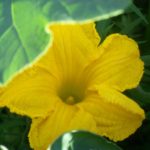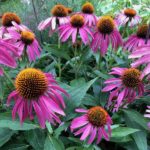
Pesto with Stinging Nettles?
If you know that pesto is made with fresh herbs (usually basil) and you are familiar with stinging nettles, this might sound impossible or very painful. Nettles make great cooked greens and tea (cooking deactivates the sting.) They are super nutritious and easy to grow. But fresh nettles have tiny hairs along the leaves and stems that deliver a dose of formic acid (like a bee sting) when you brush up against them. So it is NOT a good plant to attempt to eat fresh.
And although we often equate basil with pesto, any greens and herbs can be used, creating different tastes and results. I make pesto every summer with combinations of basil, arugula, baby kale, dandelion greens, nasturtiums, and spinach. But stinging nettle has never been on my list, even though I grow it in my yard.
Blanching is the Trick
But I just discovered an article in the Mountain Rose Herbs Journal about making stinging nettle pesto by first blanching the nettles (dipping them quickly in boiling water and then in cold). Blanching removes the sting, making it possible to use them in pesto. This was an exciting idea as I love both pesto and nettles seperately, but had never considered them together. I quickly adapted my usual vegan pesto recipe to include nettles. It was delicious! Click here if you want to try it.
The Difficulty of Seeing outside our Radius
This whole episode has me thinking about how our brains work (or don’t). My process went something like: pesto is always made with fresh leaves; you don’t want to eat fresh stinging nettles; therefore pesto with nettles cannot be a thing.
And while it doesn’t impact the world much if people aren’t eating stinging nettle pesto, it does highlight the problem we humans have in thinking outside our known radius. One has to wonder about all the solutions to real problems that we are missing.
 How can we train ourselves to see the possiblities in front of us?
How can we train ourselves to see the possiblities in front of us?
I don’t have a specific answer to that, but it seems it can be helped by intentionally cultivating openeness and curiosity. We can read and research information from lots of different sources. And we can challenge ourselves to not reject new and unusual ideas before thoroughly exploring them. Most importantly, when that new and wild idea is our own, don’t fall into becoming a self critic. The world needs all the innovative and creative solutions we can generate. As for me, I will be looking at my garden plants and wondering what I may still be missing.

*Please note that not all members of the nettle family will sting. Urtica dioica is the variety with a sting. In my book Growing Mindful, Explorations in the Garden to Deepen Your Awareness their energetic correspondence is “Prickly Gifts”, because they can be a challenge to work with, but it is so worthwhile.
*When harvesting stinging nettles, (use scissors and gloves so you don’t get stung). I am not much of a wildcrafter, preferring to grow what I need in my yard. If you are wildcrafting, be sure it is a place without toxic sprays and that you have permission to harvest plant. Never take more than you need wildcrafting. Check out the wildcrafting checklist created by the Columbines School of Botanical Studies.
You can purchase stinging nettle seeds at Baker Creek Heirloom Seeds and Mountain Rose Herbs.


